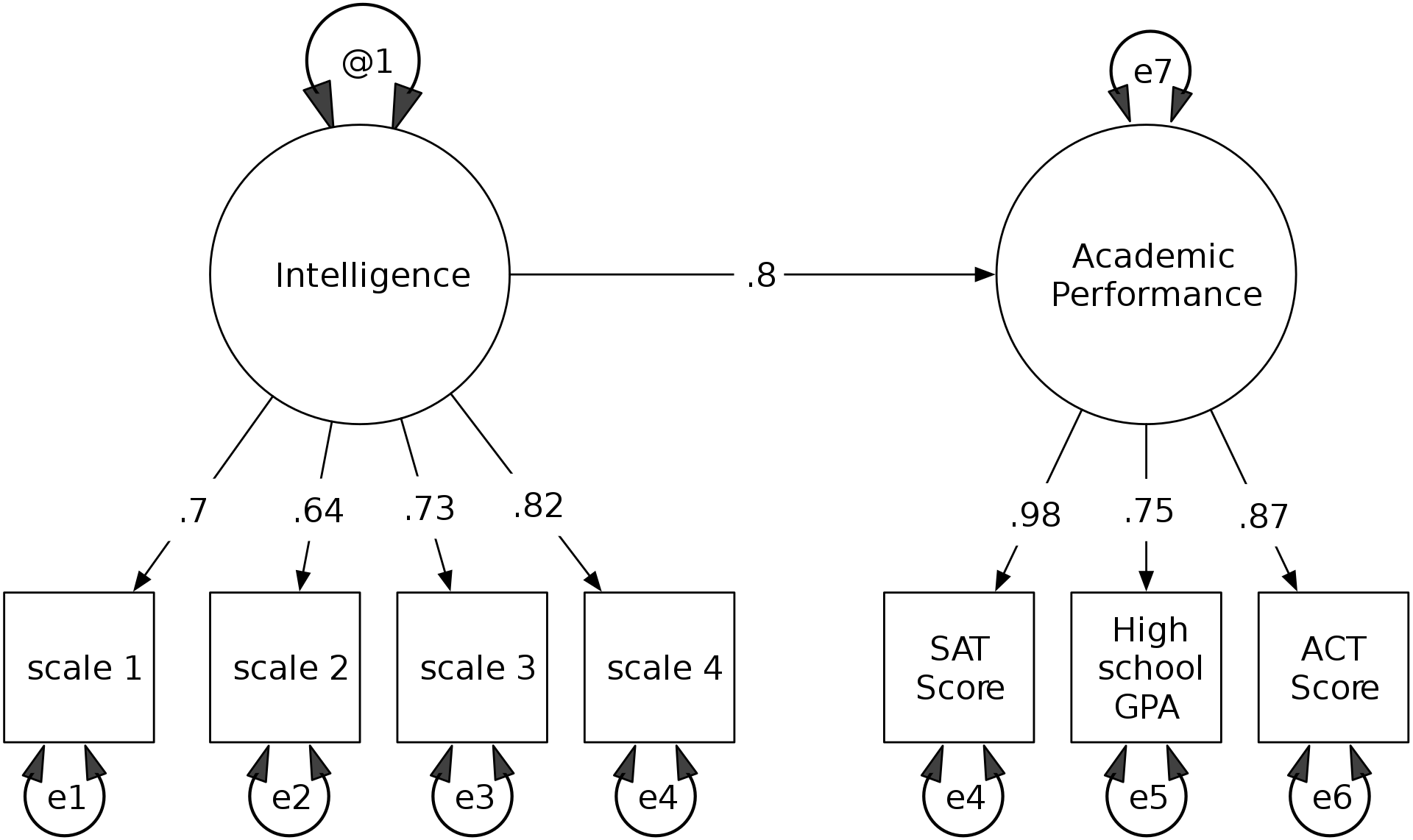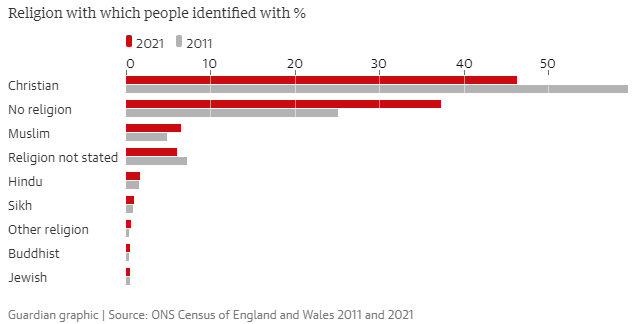Brits keep getting arrested for tweets. Elon Musk is (part of) the reason.: ‘…by refusing to even attempt to regulate social media networks directly, the government has tacitly accepted that police will be left to police unmoderated social networks directly’
Recently I read:
King of slop: How anti-migrant AI content made one Sri Lankan influencer rich: He now teaches a course on how to leverage that anti immigrant sentiment in Britain to make huge profits.
‘Too little, too late’: damning report condemns UK’s Covid response: The findings of part 2 of the Covid enquiry.
Finished playing Danganronpa : Trigger Happy Havoc 🎮.

A visual novel style game where you’re trapped in a school under the purview of a tyrannical teddy bear. He’s happy to let you “graduate”, but only if you first murder one of your friends in such a way that the rest never suspect you. And nobody wants to do something like that, right?
The main action consists of a series of trials whereupon you need to destroy the testimony of your friends/rivals by literally firing “truth bullets” at their invalid statements, in between a few somewhat inexplicable bouts of hangman and rhythm games.
“Havoc” is a good subtitle for it; it’s pretty insane and chaotic. But the story is gripping and addictive. The twists and turns you learn throughout the trials are high-tier detective drama-like at times. If you are OK with a lot of reading, and some high-school drama, it comes highly recommended, albeit with one caveat.
As others have noted, it includes plenty of aspects that these days might be considered crass or problematic - enough to make me inwardly cringe now and then - so buyer beware. It’s definitely not one for children.
Frosty webs 🕸️.
Hadn’t realised quite how many spiders resided on the fence before now.

The UK Statistics Authority has once again been forced to reprimand the Conservative party for making false claims with data.
This time we’d seen Michael Gove claiming that the UK had gotten over £800 billion worth of new trade since 2016 due to securing new free trade deals post-Brexit.
The thing is the £800 billion figure reflects total trade with these countries since 2016, not new trade. And for the vast majority of countries concerned the equivalent of these trade deals existed long before 2016; the terms and conditions were just rolled over post-Brexit, making it entirely misleading to imply that they caused new trade.
Even were this not to be the case, one cannot attribute all trade with a country to having a free trade agreement with them. As a country, the US is one of the UK’s top trade partners by value, despite us being nowhere near close to forming a free trade agreement with them.
Cookie paywalls: would you pay money to not be tracked on the web?
Morel et al. write about a new-to-me website phenomenon I’ve not come across yet - ‘cookie paywalls’. These are sites whereby to access the content you can choose to either have your behaviour tracked by the site or alternatively you can pay money to use the site without being tracked.
Given how much everyone hates the EU cookie popups I don’t think introducing more such barriers before being able to access a site going to cause much delight.
Although I guess I do like that it makes explicit firstly that you’re being tracked - which you probably are being on most other major sites anyway, and the vast majority are not so clear on that. One study from 2020 suggested that Google alone is tracking website visitors on 86% of the top 50,000 website. And secondly that the data being silently collected from you has some monetary value. A cookie paywall gives you the choice of how you want the website to extract value from you - pay with money or pay with data.
I was also interested to learn the amount typically charged for opting out of such tracking at present. In the examples the paper surveyed it ranged between 2.99 and 6.25 euros per month. Honestly I can’t see all that many people taking the imposition and risks of being tracked seriously enough to pay that kind of amount, particularly if it’s something you have to set up on each individual website you visit. It’s also hard for me to imagine that most people’s behaviour data on most sites is truly “worth” 75 euros a year.
The iOS Kindle app has finally made it easy to send an article from your iDevice to your hardware Kindle. Just share it via the share sheet to Kindle and it’ll allow you to either add it to your library or send it to a specific device.

There’s still reasons you might want to use other apps to do this- for example the Matter reader app allows you to consolidate many articles into a nicely arranged Kindle ‘book’. But the basic share feature is great for a one off articles (including webpages, ePubs, PDFs or Word files) or if using apps that don’t provide this facility.
Remember the good old days when you could waste office time playing the secret flight simulator game hidden in Microsoft Excel 97? Well now there’s a plugin, ObsiDOOM for my favourite note-taking software, Obsidian, that lets you play Doom whilst “working” and a few other games.

Listening to Fear Of The Dawn by Jack White 🎶.
Jack White, of White Stripes fame, with mega guitar riffs, almost screamy singing and a sense of noise based near insanity. But far more enjoyable and addictive than that description sounds.
Listening to Wet Leg by Wet Leg 🎶.
Hard to describe this one, although you’ve probably already heard their most famous hit, Chaise Longue. Retro-ish indie, with lyrics delivered with appropriate levels of deadpan absurdity and irony by a couple of college friends who apparently decided to form a band on a whim whilst drunk on the top of a Ferris Wheel. I’m very happy they did.
Plus if you ever commented on them on YouTube in the past, you might even show up in the official video for “Oh No”.
StackOverflow bans "fluent bullshit" chatGPT answers
I’m slightly amused that the AI-driven chatGPT chat bot has been banned from being used to write StackOverflow answers.
For the uninitiated, StackOverflow is a web forum where programmer and programmer-adjacent nerds like me ask questions about how to do various technical tasks so we look like we’re extremely proficient in our jobs.
chatGPT responses are prohibited on the basis that it sometimes produces answers that are surface-level plausible but in fact wrong. The problem is that it would take a human with expertise to know that the answers are wrong. Or “fluent bullshit” to quote a Verge article.
Personally I’d observe that humans on the internet are extremely not immune from producing reams of fluent bullshit, so perhaps it’s just a bad habit it picked up from us.
Other than that, chatGPT is a pretty incredible seeming system at first glance. You can sign up to try it for free here at present, which is well worth doing if you have even a slight interest. As it happens it has actually given me some useful answers to technical questions, as well as a lot of facility for wasting time.
Listening to Dawn FM by The Weeknd 🎶.
The conceit here is that you’re listening to a radio station on the way to the afterlife, full of relatively upbeat (for him) electro-pop with radio jingle-esque narrations here and there by Jim Carrey no less.
The review consensus seems to be that Less Than Zero is the best track, but I also liked this disco-pop-house entry.
Listening to Mainstream Sellout by Machine Gun Kelly 🎶.
At some point in my youth it felt like there were a ton of pop-punkish songs about how much the performer concerned was in always-unrequited love with “emo girls”, how they take a ton of drugs, how generally alienated and nihilistic they’re feeling, all that kind of stuff. The latest Machine Gun Kelly brings back those vibes big time.
Something about it would make me cringe if I was to find out it’s intended as entirely sincere rather than a slightly tongue-in-check callback to those times. But that aside, I’m thoroughly enjoying it as a retro listen.
I mean, this isn’t exactly lacking in cheesy clichés, but it’s also pretty catchy.
An understandable epidemic of strikes in the UK
The UK is currently experiencing a whole lot of strikes. There’s at least one a day from now to Christmas. They include unprecedented planned walkouts by nurses, paramedics, ambulance services, railway workers, post handlers, people who work in the education sector, airline workers and dock workers amongst others.
Most seem to be driven by pay offers that are substantially below inflation, which poses real problems when many people are already in the midst of a cost of living crisis. There’s also increasingly arduous and impossible working conditions in some roles, often exacerbated by there being far too many unfilled vacancies for a safe and efficient service to be offered.
What’s nice to see is that despite the best attempts of the Government, and some parts of the media, to blame the strikers for being greedy, lazy or whatever - the most high-profile unhinged attack perhaps being the chairman of the Conservatives claiming that the people going on strike are supporting Putin - recent surveys suggest that a higher proportion of the public are generally on the side of the strikers rather than the management or government.
Most of the strikes I’ve heard about are in the public sector, but more private interests are not wholly exempt. Perhaps the most dystopian one I’ve read about so far is that employees of the homelessness charity Shelter are contemplating having to go on strike on the basis that their current pay offer may result in they themselves ending up homeless, being unable to afford their own living accommodation.
One common riposte of the government is that “we can’t possibly pay essential civil servants cost of living increases because it’ll make inflation go even higher”. One thing I’ve never understood in these sorts of arguments is why, if they really believe that to be true, they continuously hold back the pay of public servants but yet never seem to legislate for - or even advise - private businesses to do the same.
Well, I guess I do understand it; it would probably cause an outcry amongst a certain amount of the public, and be absolute anathema to especially the Truss contingent of the Conservative party. But in theory this to me would be a more consistent form of same idea, even if I would most likely be opposed to it in the same way that I’m opposed to making our public servants even poorer. I’m open to arguments why this isn’t the case though, it’s certainly not my area of expertise.
For what it’s worth, it’s not like the government doesn’t already exert control over the rates of pay private businesses can offer. Two contemporary examples include minimum wage legislation, and the cap on banker’s bonuses.

Finished reading The Prestige by Christopher Priest 📚.
I really enjoyed this part science-fiction, part gothic horror, tale. Most of the story is presented as diary entries from two 19th century magicians who become obsessed with competing with each other, sabotaging each other’s tricks whilst fervently trying to understand and outperform each other’s best illusions at any cost. The cost turns out to be quite significant.
There’s a famous enough Christopher Nolan film of the book. In some ways it’s presented quite differently and, from memory, it totally misses out the book’s start and end. But it has basically the same main reveal. So the novel’s twists and turns may have had even more impact had I not seen that first. But it was still an enthralling and gripping read, worth it even if you saw the film.
Finished reading Principles and Practice of Structural Equation Modeling by Rex Kline 📚.
A good introduction to structural equation modelling, a statistical technique designed to investigate how a set of observed variables and/or an implied construct may causally relate to each other.
Here’s a simple example of a solved SEM from Wikipedia.

This book is as clear an intro as I can imagine there is, although some of the later more advanced topics I admit I rather glossed over. It seems the sort of approach you can likely only master by doing, so I’m looking forward to trying out some of the techniques for real.
It’s also a useful refresher on regression and factor analysis, those being components of many SEMs, for anyone looking to remind themselves what those practices all about.
Over here I wrote about a Microsoft Excel / Google Sheets function I only just discovered - LAMBDA().
It lets you define custom functions in terms of existing ones, allowing for a programming-free Turing-complete spreadsheet setup. There’s also a named function syntax available.
The Economist’s model of the recent US midterms, where the Republicans did a lot worse than might have been expected, suggests that Donald Trump is a real liability these days.
This paper’s modelling of results finds Republican candidates who were endorsed by Mr Trump in their primary did about 5 percentage points worse in their district than they would have if they had not received the endorsement. Election deniers suffered an additional one-point decrease in their margin…
Paper notes: Self-Monitoring via Digital Health in Weight Loss Interventions - A Systematic Review
Below are notes I took whilst reading the paper “Self-Monitoring via Digital Health in Weight Loss Interventions - A Systematic Review Among Adults with Overweight or Obesity”, by Michele L. Patel, Lindsay N. Wakayama and Gary G. Bennett.
Self-monitoring is a key component of standard treatments for obesity. Using digital tools, as opposed to paper-based monitoring, may reduce some of the obstacles faced when someone tries to do this, because:
- They may reduce the time it takes to track one’s diet, e.g. with nutrition databases that automatically populate nutrition info, or features that suggest entries.
- Wearable technologies allow for passive rather than active monitoring.
- We may be able to raise engagement levels via individualised feedback and prompts.
- Phones are very portable meaning that monitoring can be done in real time wherever you are, rather than retrospectively.
- They may reduce numeracy and health literacy barriers.
This paper reviews 39 randomised controlled trials published between 2009 and 2019 which:
- featured interventions designed to aid weight loss for participants with overweight or obesity.
- involved the use of digital tracking tools.
- had interventions that lasted at least 12 weeks and included outcomes around self-monitoring engagement and a weight loss outcome from at least 6 months after enrollment.
Its primary aim is to determine whether digital self-monitoring is associated with weight loss. Secondarily, it looks to understand the types of digital methods used for self-monitoring and their engagement rates in the associated interventions.
Of the 67 interventions involved:
- 72% of them involved self-monitoring of weight.
- 81% involved self-monitoring of dietary intake. Mostly this involved tracking food intake or calories.
- 82% involved self-monitoring of physical activity. Mostly this meant tracking the durations of physical activity, but sometimes it was step count, types of exercises or other related items.
- 7% self-monitored specific behaviour change goals.
- 54% included monitoring all of weight, dietary intake and activity.
Most commonly this was done via a website (66% of treatment arms), with a lower number using mobile apps (33%), wearable devices (16%), electronic scales (12%) and text messaging (12%), PDAs (3%) or IVR technology (3%). In several cases participants were given a choice as to which method they preferred.
Some interventions used commercial websites or apps, others used websites specific to the study.
Only 9% of interventions that recommended daily digital self-monitoring engagement saw participants engage for at least 75% of the days concerned. 58% of arms saw engagements for at least half of the recommended days.
- These numbers are higher in shorter interventions and vice versa.
- Engagement was highest when the intervention involved self-monitoring weight. The rate was somewhat lower for diet monitoring, and lower yet for physical activity. This may be confounded by differences in the frequency prescribed the opportunities to to record.
- Engagement was typically higher with digital as opposed to paper-based monitoring.
- The addition of counselling usually didn’t increase the engagement rate.
- Passive self-monitoring behaviours (e.g. wearable devices) had higher engagement rates than active self-monitoring methods, although one study showed that passive weight tracking was less associated with weight loss, perhaps because it doesn’t promote awareness of one’s behaviour as much.
Some studies compared engagement outcomes between monitoring modalities. Factors that were associated with engagement when comparison were possible include the use of:
- incentives.
- enhancements.
- a wearable device.
There was a positive association between high levels of digital self-monitoring and increased weight loss in 74% of cases.
- The rates didn’t differ much based on what was monitored, with the exception that of the 3 studies that involved monitoring behaviour change goals only 1 showed an association with weight loss.
- Interventions that lasted at least 12 months were less likely to show an association than those that were shorter. This may either be because of rates self-monitoring engagement or weight loss declining over time.
One limitation of these studies is that participants were never randomised to different levels of self-monitoring; thus high frequency monitors are self-selected and may differ from each other in other ways.
Researchers should use strategies such as the multiphase optimisation strategy to understand the different impact of different self-monitoring strategies.
Research into how to prevent the decline in self-monitoring engagement over time is needed, as well as understanding the predictors and moderators of self-monitoring engagements. Personalisation may be needed; some people may succeed more on one self-monitoring approach than others.
In the mean time adults with overweight or obesity should be encouraged to self-monitor frequently when undergoing interventions that are aimed at weight loss.
Watched My Cousin Rachel📽.
Fairly captivated by this tale of doubt and obsession and its tense gothic nature, despite the fact I was somewhat ill at the time which induced hefty lapses of concentration.
Based on reading a quick summary of the book it’s based on I’m not sure it handles the all-important ambiguity quite as well as the book might do. But well worth a watch for anyone who isn’t going to read it. Which I aim to at some point, once I’ve had a chance to forget some of the details.
Exciting news about the next version of R’s dplyr library! v1.1 will introduce non-equi joins, as well as rolling and overlap joins. The lack of these was a big frustration to me when I first started with it.
So in the future we’ll be able to do things like:
customers |>
left_join(sales_data, join_by(id, sale_date >= promotion_start))
This is a great reference, giving guidance and citations around common statistical myths. For example, what actually is a p value? What’s wrong with analysing “change from baseline”? etc.
An awesome resource when pushing back against pressure to do subtopimal statistical things
The 2021 census reveals a sizeable shift from people identifying as Christian to instead having no religion
The 2021 England and Wales census results are out now. Most headlines are focussing on the fact that this is the first time that less than 50% of our country now identifies as Christian. It’s dropped 13 percentage points vs the 2011 census and now sits at 46%.
Some are finding this particularly noteworthy in a country where the head of state - King Charles - is also the head of the Church of England, officially the “Defender of the Faith”. 26 Church of England bishops hold power in the House of Lords - the so-called “Lords Spiritual”. In theory state schools are required to hold daily acts of Christian worship, although many in reality do not and suffer no consequences.

The vast majority of the difference is explained by an increasing number of people declaring that they do not follow any religion. That’s increased by 12 percentage points compared to 10 years ago and currently sits at 37% of the country; around 22 million people.
In terms of percentage growth rates, some of the smaller “religions” top the leaderboard - although of course there’s a lot more room to grow by incredible sounding rates when you start from a very small number. Devotees of Shamanism have increased from 650 people ten years ago to 8,000 now. Pagans increased from 57,000 to 74,000, and there are now 13,000 folk identifying as Wiccan.
Some Elon Musk Twitter takeover miscellany
In the excoriating misery that is the “Elon Musk bought Twitter” discourse - an institution which has disproven any sense we had between 2016 and 2021 that it couldn’t really get much worse - there have been a couple of brighter spots I’ve appreciated.
Firstly I often ponder about the power of defaults. I’d wonder about what would happen if society ever decided to reverse some of the more ingrained ones. For example, what if if each month the norm was that you actively opted in to your job if you were happy to keep it, rather than the more conventional awkward and emotional opt out scenario.
Another big one is my eternal curiosity about what would happen if the threat of immediate poverty wasn’t there. That might reduce the incentive to stay with your current employer, however unsatisfactory they are, purely on the basis that they’re slightly less dreadful than the prospective life of penury might be.
Happily Elon managed to address both at the same time. He emailed all Twitter employees to let them know that they had to click on a link if they wanted to keep their job; very much an opt-in workflow. Let’s hope that by some magical force everyone read and understood the email by the deadline. Also this is likely illegal in many countries Twitter has employees in, but, you know, Elon.
He also seemed to offer 3 months pay, no questions asked, for those that didn’t want to opt in. Additionally, this is a company where many folk were likely well-paid enough to have some savings (citation needed I accept). Those who held any Twitter stock might in fact be richer than they’d ever been before given how much above market value Elon was forced to buy the company for.
I should note that it’s not all upside; I dare say many of the staff weren’t in a particularly privileged position - the company did not survive on elite coders alone. I also felt especially sorry for people on the kind of foreign visas that require you to keep working or be deported, not least because he’d fired half the company even before he got to this point.
The consequence? Well, it seems like thousands of employees - more than half of Twitter’s entire staff - decided to take the offer and quit. Whole departments in some cases.
Of course this particular situation is very confounded by having the knowledge that if you choose to stay then you do so in the knowledge that your new boss will be something of an egomaniac madman who not only goes to sleep next to an unsettling display of mostly Americana each night but made it very clear that you will have to sacrifice all other aspects of your life so you can do ‘extremely hardcore’ work and be subjected to his fire-at-will tantrums. So I suppose to answer my underlying questions I’d really need to wait for a more natural natural experiment.
The other entertaining thing was when Elon chose to make one of the most consequential and controversial social media moderation decisions of the recent era - whether to allow Donald Trump back in - via, of course, an unconstrained Twitter poll. It gave him the result I imagine he wanted, albeit only by the same kind of margin as the Brexit referendum ended up having - many of us Britons cannot see the numbers 52 and 48 next to each other without a slight flash of anxiety.
He then reinstated the Trump account together with a declaration in Latin - “Vox Populi, Vox Dei” that in its original context means the virtually the opposite of what I imagine he was aiming to project. Translating to something like “The voice of the people is the voice of God”, the earliest known usage of that fragment was around the year 800 in a sentence which in fact reads as “…those people should not be listened to who keep saying the voice of the people is the voice of God, since the riotousness of the crowd is always close to insanity”.
On the subject of “close to insanity”, in any case Trump was all ‘no thanks, not interested’. I first assumed this was because he was either in a huff that he was subject to the whims of another dangerous weird billionaire, or too busy coming up with some semi-illegal scheme to keep on reducing the voteshare that the US Republicans get by virtue of being their presidential nominee.
But now I understand that he’s just literally not allowed to tweet in his usual style as part of his contract with his current maelstrom of a social network - possibly the most incorrectly named site on the internet - Truth Social. Not to say he won’t break the contract; he has of course plenty of form conducting unethical and likely illegal business practices.
Ok, that’s more than enough on that subject. Honestly I have wasted a lot more time reading about Musk and Twitter in recent times than I should have. But then again I have heard this article is good…must resist, must resist.
Nerd accomplishment: made my first R package today. Super rough around the edges but it works. So far it contains a whopping 1 function I hope will be useful to my team.
It was much easier than I imagined. Hilary Parker’s extremely readable guide got me half the way there.
Finished playing The Legend of Zelda: Breath of the Wild 🎮.
This game created something of a sensation when it came out 6 years ago. I’d no doubt it was good but I’d understood it to be a time consuming open-world adventure so figured it wouldn’t work well for my typical adult life 20 minute-ish gaming sessions. However it turns out that I did find it extremely worthy of all the game of the year awards it won so I’m very glad I gave it a go. It is in fact really great, and you can definitely play it in shortish bursts if you have to (and have the willpower to turn it off).

It tells the story of Link, who awakens with no memory of the past but is nonetheless thrust on a mission to save the land of Hyrule from the evil forces of Ganon.
My fear of its open-world nature meaning that typically I’d find myself wandering around lost for ages not knowing what to do was entirely alleviated by the facts that both 1) the game makes it pretty obvious what your potential next steps are, and 2) the world is so delightful, in how it looks and how it works, that for the first time I was very happy to wander around kinda lost, dealing with the strange little side quests that in most games I’d feel compelled to ignore just to get the main mission done.
The so-called physics and chemistry engine is such that there’s a real sense of freedom. You can do almost anything you think you might be able to do within the scope of the game. Metal swords are good for stabbing monsters, sure. But they can also create a spark which, if you do it with some flint near a pile of wood, will start a fire and let you cook some food. The updraft from said heat source lets you float upwards should you have the right equipment. You could also use the fire to light an arrow and fire it to ignite any dry grass around where monsters are having a nap consume them in a fiery death. There’s probably 100 other things you could do like that I never discovered.
Even watching someone else play it for a while gave me a pleasant sense of the kind of feeling one gets when travelling to a new place and exploring in real life. This was most welcome at the time, as it was the heart of the Covid-19 lockdown when actually travelling anywhere wasn’t allowed.
And as you can see from the screenshot, it’s a mostly pretty, nature-based place, which made me wonder if there’s any research out there about using computer games to provide a mild version of the benefits humans tend to get with actual exploration in the natural world. Whilst this might sound a bit implausible, and it certainly won’t provide the substantial benefits of the physical activity that’s typically associated with exploring the outdoors, there are supposedly health benefits that can be realised via some video games. That’s a topic I’d like to explore sometimes.
One tip that I wished I’d have known before playing (for compulsive in-game hoarders such as myself) is that you really don’t need to keep most of the things you find. You don’t need to collect and upgrade everything to win. If you follow the main storyline then the end battle isn’t actually super hard, and I’m really not that good at videogames - I never really mastered the combat in this one.
But by the end I was constantly running out of inventory space. So feel free to sell most of the “consumable” things that you discover, even some of the valuable ore, to make enough money to buy the stuff in the shops that will make life less frustrating, some of which is basically essential. You can almost always find more of whatever consumables you run out of. Of course if you’re a pro trying to collect and upgrade 100% of everything then this may be terrible advice.
Listening to Hold The Girl by Rina Sawayama 🎶.
Whilst the album’s approach was purportedly inspired by Taylor Swift’s Folklore, perhaps performing some kind of therapeutic function for Rina, perhaps what most stands out about it is the sheer variety of genres that the songs encompass.
Wikipedia currently lists it as being some combination of:
1990s alternative rock, pop rock, soft rock, Europop, trance, industrial, country pop, hi-NRG, pop punk, Eurotrance, stadium rock, Britpop, disco, R&B, hyperpop, J-pop, house, Eurodance, electronic, UK garage, techno, folk and psychedelic music.
In any case, there’s got to be something for most people on this album. Here’s one I liked.